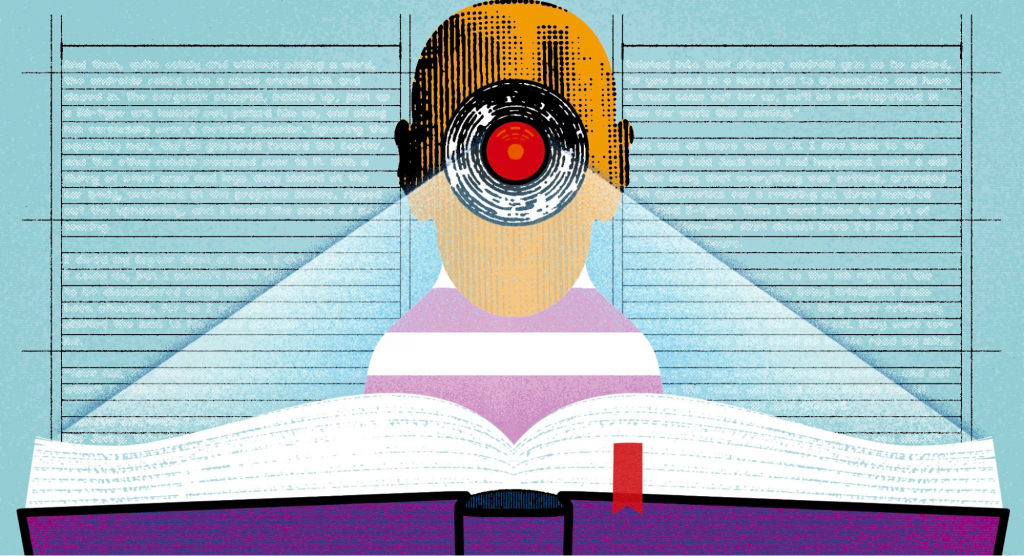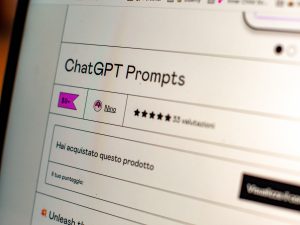Introduction
Are you an aspiring poet or someone who simply loves the art of crafting beautiful verses? Do you often find yourself struggling with writer’s block or the challenge of weaving words into poetry that truly resonates? Writing poetry is a deeply personal and expressive art form, but it often comes with its own set of challenges.
The quest to find the perfect words, to create something truly unique, and to convey emotions and themes can be a daunting endeavor. Writer’s block and the frustration of not being able to articulate your thoughts can easily stand in the way of your poetic aspirations. But what if there was a way to make this journey smoother, more enjoyable, and filled with creative sparks?
We have a solution that will not only ignite your creativity but also make the poetic journey effortless and enjoyable. ChatGPT is your virtual muse, ready to assist you in crafting heartfelt, meaningful poems. In this article, we will take you on a journey through the art of chatgpt poem, providing you with a step-by-step guide, tips, and insights to make your poetic dreams a reality.
The Poetic Journey with ChatGPT

Step 1: Create a New Chat
To begin your poetic adventure with ChatGPT, the first step is to ensure that you have an active ChatGPT account. Registration is a breeze, and once you’re logged in, you can initiate a new chat session with ChatGPT. Think of this chat as your creative space, where you can interact with ChatGPT and convey your poetic aspirations.
Creating a new chat session sets the stage for collaboration with ChatGPT and opens the door to a world of creative possibilities.
Step 2: Ask for a Poem
With your chat session established, it’s time to dive into the process of crafting your poems. Start by typing your prompt into the chat window. Here, you have the freedom to be as specific or as general as you’d like, depending on the type of poems you wish to create.
However, the key to a successful collaboration with ChatGPT lies in providing clear and concise instructions. To help ChatGPT understand your vision, provide context by including details such as the subject matter or topic of your poems, the desired tone, writing style, and the preferred length of the poems.
Sharing examples of other poems that inspire you or that you wish to emulate can also be immensely helpful.
For instance, if you’re seeking to compose a love poem for your partner, you could mention details about their interests, personality traits, and any nature metaphors you’d like to include.
Additionally, offering examples of beloved love poems, such as Shakespeare’s Sonnet 18 or T.S. Eliot’s “The Love Song of J. Alfred Prufrock,” can provide ChatGPT with a clear understanding of your creative vision.
In crafting your prompt, precision is the key. The more precise your instructions, the better ChatGPT can comprehend your requirements and generate the poems that align with your expectations.
Step 3: Review the Output
Once you’ve provided ChatGPT with all the necessary information, it springs into action, swiftly generating a draft of your poems. This is where the magic begins – AI-driven creativity at your fingertips. However, remember that the poem draft is not set in stone; it’s a canvas for you to review and modify to your heart’s content.
Take your time to read through the poems carefully. Does it capture the essence you envisioned? Is the tone just right? If you find any areas that need improvement or adjustment, don’t worry; ChatGPT is here to collaborate with you. You can edit the poems, ask follow-up questions, or even request an entirely new version.
If you wish to explore multiple variations of your poems, ChatGPT offers a convenient “Regenerate Response” button. Alternatively, you can achieve this by making slight edits to your prompt. This flexibility ensures that you have ample creative control over the final output.
Step 4: Save and Share
Once you’re satisfied with the ChatGPT poem AI has helped you create, it’s time to preserve your masterpiece. You can easily copy and paste it into a text editing software of your choice, such as Microsoft Word, Google Docs, or Notepad.
This step ensures that your poems are securely stored and easily accessible for future reference or sharing.

And speaking of sharing, poetry is meant to be shared. Whether you want to touch the hearts of your friends, family, or a wider audience, ChatGPT makes it effortless. Your poems, enriched by AI creativity, can now be shared with your desired audience, spreading your poetic expression far and wide.
Crafting Your Poetry Prompt
In the realm of poetic expression, the first step toward crafting a masterpiece with ChatGPT lies in the art of formulating the perfect poetry prompt. This pivotal phase sets the stage for the AI’s creative prowess to come to life.
In this section, we’ll delve into the intricacies of creating a prompt that will not only stimulate ChatGPT’s imagination but also yield poems that resonate deeply with your desired themes and emotions.
The Art of a Well-Crafted Prompt
Keyword Significance: Keywords are the foundation of an effective poetry prompt. They act as guiding stars for ChatGPT, ensuring that the AI comprehends the core theme or emotion you wish to convey. For instance, if you’re aiming to create a love poem, keywords like “love,” “romance,” or “passion” should feature prominently in your prompt.
These keywords are not only critical for ChatGPT’s comprehension but also contribute to the quality of your content.
Being Specific vs. Staying Open-Ended
Your choice between specificity and open-endedness depends on your creative vision. A specific prompt might look like, “Compose a sonnet about the beauty of a sunrise.” This provides ChatGPT with a clear direction, resulting in a focused and targeted poem.
Alternatively, an open-ended prompt, such as, “Craft a poem that explores the mysteries of the universe,” invites the AI to exercise its creative freedom. Balancing these approaches can yield diverse and inspiring results.
- Specific Prompts: When crafting a specific prompt, you provide ChatGPT with a clear direction, focusing its creativity on a particular theme or subject. Specific prompts are ideal when you have a distinct vision for your poem. For example, if you want a poem about a specific moment or scene, such as “a moonlit beach proposal,” a specific prompt is the way to go.
- Open-Ended Prompts: In contrast, open-ended prompts grant ChatGPT creative freedom. These prompts encourage the AI to explore various avenues and generate poetry with unique angles. Open-ended prompts are excellent when you seek unexpected or diverse poetic interpretations. For instance, if you want a poem about the concept of “time,” allowing ChatGPT to roam freely can yield intriguing and thought-provoking results.
Providing Context for Your Poem
Context breathes life into your prompt. To ensure ChatGPT understands your intent, include relevant details. Providing context for your poem is essential to help your readers understand and appreciate the deeper meaning, emotions, and imagery within your verses.
Context can also set the tone, mood, and atmosphere of your poem. Here are some tips on how to provide context for your poem effectively:
- Title:
Start with a thoughtful title that gives readers a clue about the subject, theme, or mood of your poem. A well-chosen title can immediately provide context.
- Epigraph:
Consider adding an epigraph, which is a brief quotation or excerpt from another work that relates to your poem’s theme or message. This can provide a broader context and perspective.
- Introduction:
You can begin your poem with a brief introductory stanza or sentence that sets the stage for the rest of the poem. This can introduce the setting, characters, or central ideas.
- Descriptive Language:
Use descriptive language to paint a vivid picture of the scene or subject matter. Sensory details like sights, sounds, smells, and textures can help establish context.
- Setting:
If your poem has a specific setting, describe it in detail. This can include mentioning the time of day, the season, the weather, or any unique features of the location.
- Characterization:
If your poem involves characters, provide some insight into their personalities, emotions, or motivations. This can help readers connect with the individuals in your poem.
- Historical or Cultural References:
If your poem references historical events, cultural elements, or specific places, provide enough information for readers to understand these references. You can include footnotes or explanations within the poem if necessary.
- Metaphors and Symbols:
If you’re using metaphors or symbols in your poem, make sure they are clear and relevant to the overall context. Explain their significance if it’s not immediately obvious.
- Tone and Mood:
Consider how the tone and mood of your poem contribute to its context. Is it a joyful or melancholic poem? Does it convey a sense of urgency or tranquility?
Remember that the amount of context you provide should align with your poetic intentions. Some poems may require more context than others, while some may thrive on minimalism. Ultimately, the goal is to enhance your readers’ understanding and emotional connection with your poem.
Examples of Effective Prompts
Guidance Through Examples: To assist you in crafting effective prompts, we’ve provided a few illustrative examples. These examples showcase the diversity of prompts you can create and how keywords, specificity, and context can be combined:
- Haiku About Tranquility: This prompt specifies the form (haiku), the theme (tranquility), and potentially the season (autumn). It guides ChatGPT to create a concise, nature-inspired poem.
- Resilience in Adversity: Here, the prompt focuses on a theme (resilience) and a situation (adversity). It encourages ChatGPT to generate a poem with emotional depth and reflection.
- Celebrating Romance Under Stars: This prompt combines the theme (romance), a setting (under the stars), and the emotion you want to convey. It provides both context and direction for ChatGPT to craft a romantic poem.
Other examples:
- “Write a poem that captures the beauty of a fleeting moment in nature.”
- “Imagine you are a passenger on a time-traveling train. Write a poem about the destination you hope to reach.”
- “Write a poem about the sensation of falling in love for the first time.”
- “Use the following five words in your poem: whisper, moonlight, labyrinth, yearning, and serenade.”
- “Write a poem inspired by the colors and emotions of a vivid dream you’ve had.”
- “Describe the taste of your favorite childhood dessert in poetic detail.”
- “Write a poem that explores the concept of ‘home’ and what it means to you.”
- “Create a poem from the perspective of an inanimate object, like an old book on a dusty shelf.”
- “Write a poem that tells the story of an unexpected encounter with a stranger on a rainy day.”
- “Use the first line of your favorite book as the starting point for your poem.”
- “Capture the essence of a thunderstorm in your poem, conveying both its power and its beauty.”
- “Write a poem that explores the theme of resilience, drawing inspiration from a personal experience or historical event.”
- “Choose a painting or artwork and write a poem that interprets and expands upon its visual imagery.”
- “Write a poem that embodies the emotions of a bittersweet farewell.”
- “Create a poem using only questions, exploring a topic or concept that intrigues you.”
By studying these examples and understanding the principles behind them, you’ll be well-equipped to create poetry prompts that effectively channel ChatGPT’s creative potential while optimizing your content for search engines. Your prompts will serve as the bridge between your vision and the AI’s poetic abilities, resulting in meaningful and discoverable poetry.
Crafting a Sample Prompt in ChatGPT
To make the process more tangible, let’s consider an example prompt for creating poems using ChatGPT:

Using Chat GPT Poems for Different Poetic Forms
Poetry is a vast universe, comprising various forms and styles. ChatGPT-generated poems are your versatile companion, capable of adapting to the nuances of different poetic structures.
You can use ChatGPT to generate poems in different poetic forms by providing clear instructions and constraints in your prompts. Here’s how to do it:
Specify the Poetic Form:
Start by specifying the poetic form you want to use in your poem. Mention the name of the form (e.g., Sonnet, Haiku, Limerick, Tanka, Acrostic, Free Verse) in your prompt. This tells ChatGPT the structure and rules it needs to follow.
Provide Form-specific Guidelines:
If the poetic form you choose has specific rules or guidelines (e.g., rhyme scheme, syllable count, line structure), include these instructions in your prompt. Be as clear as possible about the form’s requirements.
Theme or Topic:
You can also provide a theme, topic, or subject matter for the poem. This helps give context and direction to the poem while adhering to the chosen form.
Example Prompts:
Here are some example prompts for different poetic forms:
- Sonnet:
Write a Shakespearean sonnet about the beauty of a sunset. Follow the ABABCDCDEFEFGG rhyme scheme and use iambic pentameter.
- Haiku:
Create a haiku that captures the tranquility of a mountain lake at dawn. Remember the 5-7-5 syllable pattern.
- Limerick:
Write a lighthearted limerick about a mischievous leprechaun and his pot of gold. Use the AABBA rhyme scheme.
- Tanka:
Compose a tanka about the changing seasons in a forest. Follow the 5-7-5-7-7 syllable pattern.
- Acrostic:
Create an acrostic poem using the word “MAGIC.” Each line should start with the corresponding letter, and the poem should convey a sense of wonder.
- Free Verse:
Write a free verse poem that explores the concept of time and its impact on human existence. No specific rhyme or meter required.
Review and Edit:
After ChatGPT generates a poem based on your prompt, review the output. Depending on the complexity of the form and your specific requirements, you may need to edit and refine the poem to ensure it adheres to the chosen poetic form while maintaining your intended message and style.
Remember that ChatGPT can assist in generating poems in various forms, but it’s a tool to aid your creativity. Feel free to experiment with different forms and prompts to explore the world of poetry and find your unique voice as a poet.
Analyzing and Improving Your Poetry
Crafting poetry is not just about writing—it’s also about refining and perfecting. Chat GPT Poems offers tools for the critical analysis of your work. It can help you identify areas where your poem might benefit from enhancement, whether it’s in terms of meter, rhyme, or thematic consistency.
Analyzing and improving your poetry is an essential part of the creative process. Here are some steps and tips to help you effectively analyze and enhance your poems:
- Read and Reflect:
Start by reading your poem multiple times, both silently and aloud. Pay attention to your initial emotional response and any immediate impressions. Reflect on the poem’s theme, message, and the emotions it conveys. Consider what you intended to express and whether it comes through clearly.
- Assess Poetic Elements:
Examine the poem’s structure, including its rhyme scheme, line length, and stanza organization. Determine if these elements enhance or detract from the poem’s impact. Analyze the use of poetic devices such as metaphor, simile, imagery, symbolism, alliteration, and assonance.
Are they effectively contributing to the poem’s depth and meaning? Consider the poem’s rhythm and meter. Does the pacing align with the poem’s content and emotions? Ensure that your choice of meter suits the subject matter and mood.
- Evaluate Language and Diction:
Scrutinize your word choices. Are your descriptions vivid and evocative? Can you replace vague or clichéd language with more precise and original expressions? Assess the effectiveness of figurative language. Ensure that metaphors and similes enhance the reader’s understanding and emotional connection.
- Review Imagery and Descriptions:
Take a closer look at the sensory details and imagery in your poem. Are they appealing to the senses and helping readers visualize and feel the poem’s content? Check for inconsistencies or mixed metaphors that might confuse readers or weaken the poem’s impact.
- Evaluate Theme and Message:
Revisit the central theme or message of your poem. Is it clearly defined, or does it need further development or clarification? Ensure that your poem communicates the intended emotional or intellectual response to the reader. Does it provoke thought, evoke emotion, or inspire reflection?
- Seek Feedback:
Share your poem with others, such as fellow poets, writing groups, or trusted friends. Their feedback can provide valuable insights and perspectives. Be open to constructive criticism. Understand that not all feedback will align with your vision, but it can help you identify areas for improvement.
- Revise and Edit:
Based on your analysis and feedback, revise your poem. Don’t be afraid to make substantial changes if necessary. Focus on refining the structure, language, and imagery to strengthen the poem’s impact. Experiment with different words, phrases, or lines.
Remember that the process of analyzing and improving your poetry is ongoing. Don’t be discouraged by initial drafts or critiques; instead, view them as opportunities for growth and refinement. With patience and dedication, your poetry can evolve and become more compelling and resonant with your intended audience.
Conclusion
In the realm of poetry, where every word carries immense weight and every line resonates with emotions, ChatGPT by ai-pro.org stands as a formidable ally for poets of all calibers. The journey through the art of crafting verses becomes not only easier but also significantly more enriching when AI assistance is at your disposal.
This AI-powered companion empowers poets to overcome writer’s block, infuse creativity into their verses, and share their art with the world. It enhances the poetic journey, making it not only accessible but also immensely enjoyable.
So, whether you’re an experienced poet seeking fresh inspiration or a novice eager to express your thoughts through verse, ChatGPT is here to accompany you. It’s a tool that transcends boundaries, fusing human creativity with AI assistance, and opens doors to new realms of artistic exploration.
Embrace the possibilities that ChatGPT offers, unleash your poetic potential, and let your words resonate with readers across the globe. Poetry is a universal language, and with ChatGPT, your poetic voice can touch hearts and minds in profound ways. Your poetic masterpiece awaits, and ChatGPT is your trusty companion on this extraordinary journey.
Write Poems with ChatGPT Today
Now that you’ve delved into the enchanting realm of poetic expression with ChatGPT, it’s time to embark on the next chapter of your poetic journey. Whether you’re a seasoned poet seeking to amplify your creative genius or a budding wordsmith ready to unleash your voice upon the world, ChatGPT is your gateway to unlocking the boundless potential of your poetic artistry.
Subscribe to AI-Pro and gain access to a suite of powerful tools designed to elevate your poetry writing skills. Discover the magic of AI technology and its role in enhancing your poetic prowess. Join us on this poetic odyssey and explore the limitless possibilities that await.
FAQs (Frequently Asked Questions)
Q1: What is ChatGPT?
ChatGPT is an AI-powered natural language processing tool designed to assist users in various creative and textual tasks, including writing poetry.
Q2: How do I access ChatGPT?
ChatGPT is available through ai-pro.org’s Basic and Pro subscription plans. Simply sign up and log in to your account to get started.
Q3: Can ChatGPT generate poems in different styles?
Yes, ChatGPT is versatile and can generate poems in various styles, tones, and themes. Simply provide clear instructions in your prompt.
Q4: Is ChatGPT suitable for both beginners and experienced poets?
Absolutely! ChatGPT caters to poets of all levels, offering inspiration, collaboration, and creative assistance.
Q5: Can I use ChatGPT to create other forms of writing, aside from poetry?
Yes, ChatGPT can assist with a wide range of textual tasks, including writing essays, stories, and more. Simply adapt your prompts accordingly.
Q6: Is my data secure with ChatGPT?
Ai-pro.org and Open AI take data security seriously. Your information is protected in accordance with industry standards. For more details, refer to our privacy policy.
Q7: How can I contact customer support for assistance with ChatGPT?
For any inquiries or assistance with ChatGPT, you can reach out to our dedicated customer support team through our website or contact details provided in your account.




